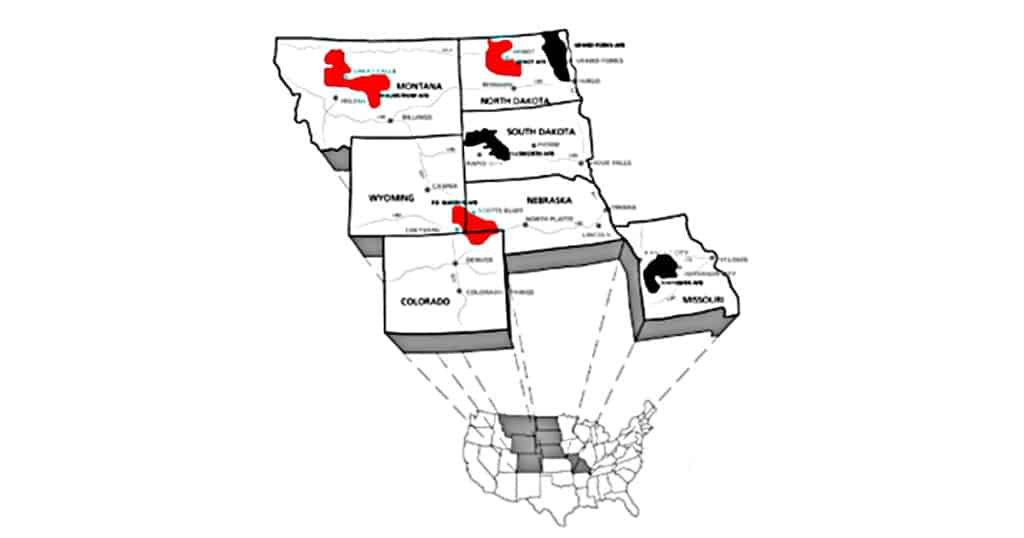
Let’s Wring Out The Nuclear Sponge
“I know not with what weapons World War III will be fought, but World War IV will be fought with sticks and stones.”
Albert Einstein
Growing up in Montana during the Cold War, I often found myself under a school desk as we went through frequent nuclear fallout drills. Montana is a state known as being a part of the “nuclear sponge,” where it is universally known that Russia targets our nuclear missile facilities, and we would absorb any large-scale nuclear exchange. They have not moved since they were built and that was eighty years ago. Even today Montanans who still know this threat exists are less inclined to hide under a desk and more likely to sit on the front porch with their favorite drink and watch the end of the world. We recognize that even if we were to live through a nuclear strike the world that followed such a holocaust is probably not worth trying to live in. We have the same attitude towards Yellowstone Park blowing up.
Montana in the 1960s was not densely populated, and this was part of the appeal to building the silos here. The same is true for the other locations on the map you see above. In the 1960s Montana’s population was estimated at 680,000 people. Today it is nearly 1.13 million. Given the exodus of people fleeing states like California, Oregon, and Washington, our population is expected to increase. Yet we remain a part of the “nuclear triad” where America maintains land, sea, and air capabilities. The land-based options were viewed as necessary when it was thought the Russians (Soviet Union) were winning the balance of power, even though they were not.
It is time to think differently concerning the positioning and deployment of America’s’ nuclear arsenal. I do not think it is wise or necessary to keep missiles in fixed locations that are so easy to target and increasingly surrounded by people moving into the affected states. We need to stop thinking of these areas as nuclear sponges, perpetually 30 minutes away from decimation, and as acceptable losses. We should develop new strategies that allow for rapid response and deterrence equally as effective as land-based systems. In fact, there should be no land-based systems anymore.
Nuclear silos are typically 3.5-17.5 miles away from a launch facility and 3.5-8.5 miles apart from each other. In Montana, there are one-hundred missiles. They were installed in the 1960s and last updated in the 1970s. The technology inside the facilities has improved, but the missiles themselves need some work. The Air Force has a $400 billion plan to upgrade both the missiles and the facilities. I think we can make better use of that kind of money and acreage.
America needs to rely solely on airborne and sea-launched missile systems. There are advantages to making this move.
- Americans are not at risk of a direct nuclear strike in the core of our homeland as adversaries would seek first to destroy our ability to respond.
- We could sell the silos and the land around them to citizens and reduce the cost to the taxpayer.
- Mobile nuclear launch systems in the air and under the sea are much harder to target than fixed facilities.
- Military risk is distributed by spreading missiles across multiple launch platforms rather than condensing missiles in three geographic areas.
- There is a reduced risk to the population by eliminating the need to move nuclear systems over land.
As always, there are disadvantages at the outset of any plan like this. Some are fiscal and some are time constraints since this plan would require building more submarines and potentially airplanes. I do not see how maintaining the status quo out of fear of change is a good reason not to make those changes. We live in a highly connected world, with better technology and communications systems. Additionally, existing systems with a destructive potential far beyond what is necessary means we should adjust how we do business.[i]
Much has changed since the 1960s; it is time to change how we posture our nuclear forces, too. The triad would be better as a duet.
[i] I intentionally ignored any treaty obligations as part of this article and did not account for the funding process. Both may impact how this plan would be implemented but do not affect the validity of the argument.



